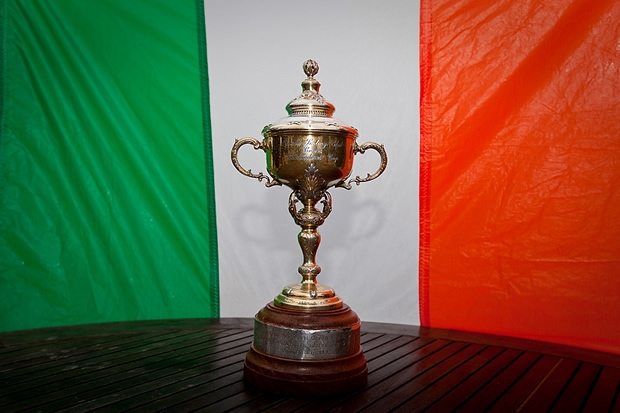
How the Irish won the Rolex Commodores' Cup
Last week’s Rolex Commodores’ Cup saw the Irish dominate from start to finish, earning a win for the team that has eluded the favourites on the last two occasions the biennial event has been held.
The Irish three boat team comprised: Anthony O’Leary’s Ker 39 Antix as the ‘big’ boat, David Dwyer’s Mills 39 marinerscove.ie as the ‘mid’ boat and Robert Davies’ Corby 36 Roxy 6 the ‘little’ boat. The Cat 3s on the boats were Antix’s Dave Lenz and Peter O’Leary (son of the owner, fresh from his victory in the Star class at Skandia Sail for Gold), Andy Beadsworth on marinerscove.ie and Prof O’Connell on Roxy 6.
From left to right: Anthony O'Leary, Roxy 6 skipper Andrew Claughton and David Dwyer with Justin Hogbin, Manager Communication of Rolex UK
And they didn’t just slightly win. The Irish big and medium boats were the run-away leaders in their classes, while in the small boat class Roxy 6 was a close second to another stellar performer in this regatta, Christopher Opielok’s Corby 36 Rockall III of the Hong Kong team.
There is no doubt that having put such a huge effort into past Rolex Commodores’ Cup the Irish were keen to win. On this occasion they fielded just one team, but this enabled them to focus their efforts. Several observers reckoned that the single team approach benefitted the Irish, with all three of their boats heralding from Cork, whereas on previous occasions there has been some distracting rivalry between the Cork and Dublin-based teams.
Even marinerscove’s David Dwyer admitted as such: “That was a major factor all the way through. After 2006 with teams competing against each other, we couldn’t get that out of it. We came from Ireland to England and we just couldn’t stop it.”
However Antix owner Anthony O’Leary disagreed, feeling that they may have lost out through having no selection trials. “We were hoping that there was a possibility of a second team and what we wanted to do was do the preparation slightly differently and have some sort of a trials situation which would up the ante for everyone.”
So their all coming from Cork – did that make a difference? “It does,” said O’Leary. “It means you are a bit more frank with people. We do all know each other very well. There was no problem in turning off the competition between us and turning on the team hat, because the fantastic things about this event is that it is three boats and if you let the side down it is very painful, not just for you, but for two other boats as well.”
With no trials, the Irish team instead set out an intensive regatta schedule for themselves that this season included the IRC Nationals in both Ireland and the UK, the Bell Lawrie Scottish Series and Cork Week. “That was a great help to all three boats in our final regatta, but particularly for Roxy because she is a new boat was learning little bits and pieces. From our point of view it was triple checking everything,” says O’Leary.
So the implication here is that the team had planned their strategy very early, just as GBR Red did in preparation for their winning Rolex Commodores’ Cup campaign in 2008.
The crews also had had time in their boats – O’Leary first chartered his Ker 39 two years ago before buying it last autumn, while Dwyer had his boat built in 2006. Both boats have been highly refined over this period. Roxy 6 was new this spring, but joined the other two on their busy regatta schedule this year.
As O’Leary says: “It is a credit to the guys on Roxy, because Antix and marinerscove have been around, so the changes to improve those boats this year have been small enough, whereas Roxy had a new build and got the boat in the water and all the attendant little things you have to do [to a new boat]. The owner Rob Davies, in fairness to him, didn’t take a huge amount of persuasion to sign up but it took a lot of extra effort and a lot of extra cash. We owe him a huge debt.”
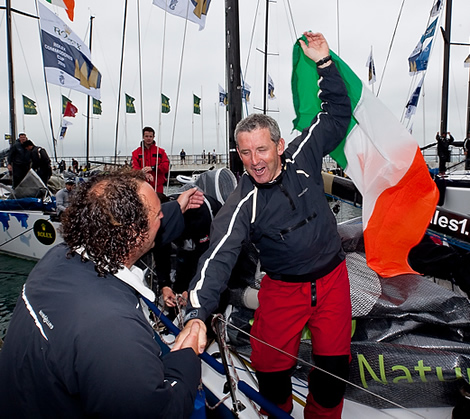
This time there was also a more intense team effort. As Roxy 6’s Prof O’Connell says: “There was a huge focus on co-operation between the three boats and we had a lot of exchange of information between the crews coming into the Rolex Commodores’ Cup in terms of rig tuning, sail design, personnel, etc. And we had an overall focus in terms of meteorology and management from Mike Broughton and the Irish Cruising and Racing Association [ICRA] guys, who were here for the week from an on-shore management perspective.”
Like all boats, each had its strengths and weaknesses. For example at the UK IRC Nationals Roxy 6 was felt to be too strong in heavy air so she was re-moded more for light air prior to the Rolex Commodores’ Cup, which in retrospect, given the weather that transpired, was possibly a mistake. “We went with a bigger spinnaker after the UK IRCs because we felt we were a bit sticky downwind and we went lighter with the crew weight and a few rig changes. She is pretty much an all-rounder now,” adds O’Connell.
Dave Lenz described Antix’s characteristics: “We are quite moded for breeze in this fleet. It is how the boat ended up two year ago - it has a heavy bulb, a bit low on sail area. It is a good all rounder: It is not a bad reaching boat, it is a good upwind, it is decent downwind, so it sits pretty well in its class. We have a good sail program, we are running new sails.”
O’Connell reckons that Antix is potentially a little vulnerable in under 8 knots while marinerscove was moded for light medium conditions and is potentially a little vulnerable when it gets very windy. “So we have a good spread of boats that are competitive across the wind range.”
They also had a good spread of boats from the leading IRC designers Jason Ker, Mark Mills and John Corby. Interestingly all three also had both short bowsprits and spinnaker poles. “I think you need to have both because under IRC if the pole is longer than the distance from the base of the mast to the forestay, then you are allowed to put on a bowsprit provided it doesn’t extend out beyond the length of the pole and obviously the bowsprit is really good for using A-sails for reaching and light air VMG running.”
In an event where there is a mix of bowsprit only and spinnaker only boatts, having the ability to use both adds several more modes to the armoury.
Former Team Shosholoza skipper Mark Sadler who was racing on the South African smaller boat, a bowspritted J/109 explained: “I think if it is a small slow boat it is nice to be able to pull the pole back and sail really deep especially with current. We get trapped to leeward of boats with symmetrics and so it is hard to place ourselves.”
From the Hong Kong team Jamie McWilliam reckoned that they would have been better off with a pole on their King 40, Blondie. “We selected an incorrect configuration on our boat - we would have taken a pole, but if we had done that it probably would have blown 6-8 knots the entire week with a chop! So it worked out poorly for us - the Mariners fellows definitely had legs on us downhill as did Quokka and La Réponse and to be honest I think the Rockall boys would do the same. There is no question that in this flat water in anything from 10-16 it is brutal [not to have a pole]. You wind up getting leverage and if you get the right shift that is fine and if it is the wrong shift you are deep, so you can never just play safe. You can never just lead the train way off down the run and go for it.”
While past Rolex Commodores’ Cup have been won by teams, most notably as the French, which primarily comprised production boats, the Irish team’s vessels were custom-built with the exception of Antix. Hopefully this was only co-incidence as if this were a factor in what is supposed to be one of the world’s premier events for Corinthian sailors it would distinctly send the wrong message.
“In the conditions when you have flat water, the production boats I would say have an advantage over the one-offs,” says Anthony O’Leary. “In breezier conditions where you have more chop the one-off boats have a slight advantage. In the lighter airs we don’t know because we haven’t sailed much in that.”
Prof O’Connell provides his take on this: “Some of the production boats are very very competitive, like Jim MacGregor’s [Elan 410] Premier Flair is sailed really well and she is a very competitive boat once the breeze is up and especially offshore. Then the Grand Soleil 43s with Peter Rutter’s Quokka and the French guys with Gaia, that is a production boat. There are plenty of production boats that are competitive under IRC as well.”
So in a nutshell – the Irish team, put their program in place early, they did a lot of sailing as a team in regattas leading up to the main event, with the same crews and there was money available for development, particularly the sails.
Having covered previous Rolex Commodores’ Cups we felt that moving the event from June to mid-August was a good move. Previous events have been mostly light wind affairs and in mid-August there is more potential for stronger breeze and more exciting racing, which definitely proved to be the case last week.
The rating bands defining the three classes proved something of an oddity with the majority of boats in all classes being 40 footers (or 35 to 45ft) – GBR White and GBR Black teams even had Grand Soleil 43s as the mid-sized boat with a Summit 40 and a Corby 40 respectively as their big boat. Given this fact and that there were only 30 boats in total competing, the suggestion was also made that the classes should be removed all together and the teams should simply comprise three boats within a rating band. Given As all the boats were similarly sized, with the exception of Simon Henning’s Farr 45 Alice II in GBR White that streaked away on its own in every race, it also seemed absurd to have three separate starts for the supposedly different classes. Team racing – bring it on!
The week also raised the ugly head of the ISAF Sailor Classification code, as the event demands all crews to be amateurs (or Group 1) with only two pros (Group 3) on the big boats and one on the mid and small sized boats. (Group 2 classification was binned, appropriately, on 1 April this year). During the week one crewman on board Peter Rutter’s Quokka 8 was ‘exposed’ as a professional – he had previously sailed as a Sunsail skipper – highlighting again some of the short comings of the system.
RORC Commodore, Andrew McIrvine, who raced his Beneteau 40 La Réponse in GBR White, touched on this when he summed up the event: “On the whole everyone is happy. There were a few glitches about measurement and a few glitches about the amateur status. I think it is very unfair - getting rid of Group 2, has made it very difficult. You can’t compare some of the guys who have occasionally done a bit of charter work, but it’s not their main profession, with say Russell Coutts. Our foredeck – he does fibre glass repairs, he is not a pro sailor, and he is our only Group 3.”
This year the number of teams competing dropped from 15 in 2008 to 10, although the top end of the fleet seemed as competitive as ever. “I think the recession reduced the number of teams but we have three continents,” says McIrvine. “Bubbling under we had Germany, Sweden, another Scandinavian team and America. The Dutch had good boats but too many pros on the. The Dutch have always come to the event so we are disappointed not to have had them. I hope people will go away thinking it was very good competition. It is the only offshore team international competition left.”

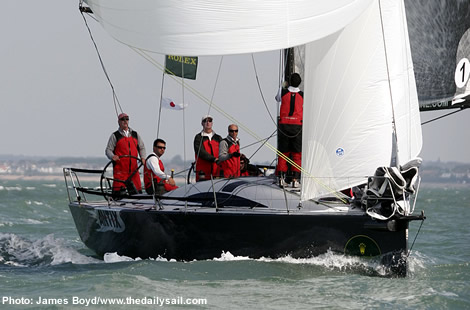
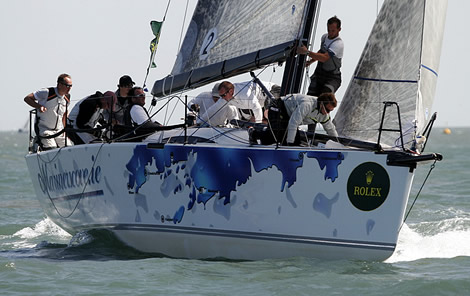
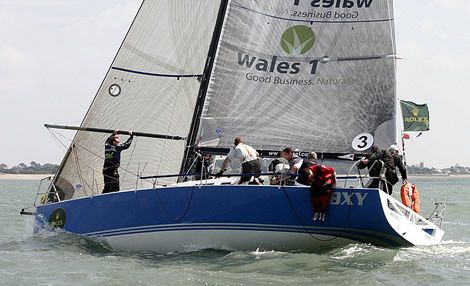
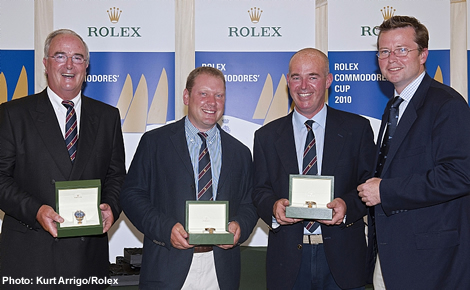
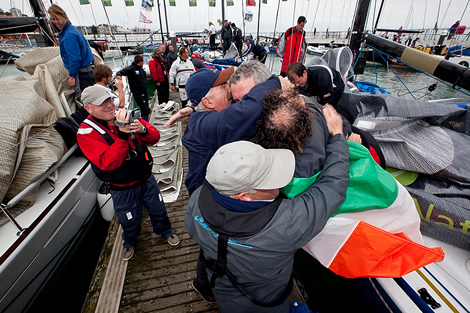
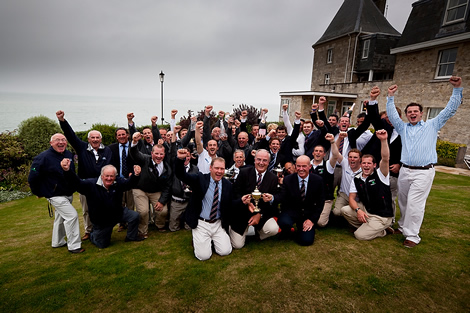








Latest Comments
daneralston 26/08/2010 - 12:49
"It is the only offshore team international competition left.” Andrew McIrvine Really? what is the ISAf offshore Team world championship then, the Sardinia Cup? 8 teams all from different countries and arguably a higher quality fleet with top boats from the Farr 40 fleet and Melges 32 fleetAdd a comment - Members log in